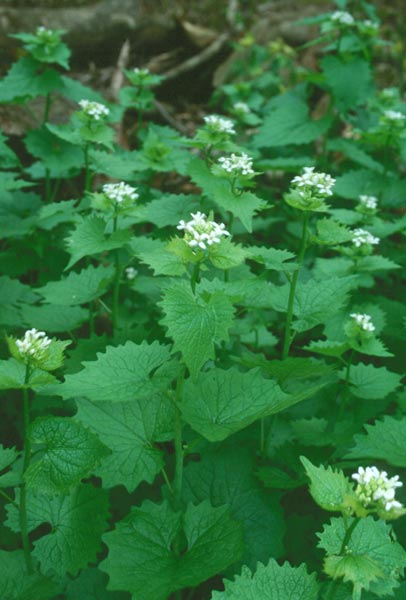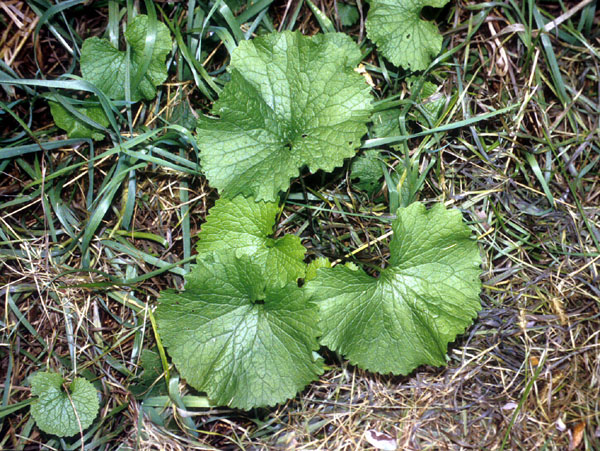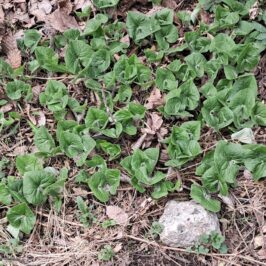
Garlic Mustard invades high quality upland and floodplain forests and savannas, as well as disturbed areas, such as yards and roadsides. It is sometimes found in full sun, though most often grows in areas with some shade, and does not do well in acidic soils. Native herbaceous cover has been shown to decline at sites invaded by garlic mustard.
Garlic mustard (Alliaria petiolata) is a European woodland plant introduced to North America by early settlers for its culinary and alleged medicinal qualities. In North America, European insects and diseases that control the plant’s population are not present. Garlic mustard starts growing earlier in the season than our native plants, and outcompetes them. It also produces large quantities of seed. For these reasons, garlic mustard spreads rapidly in wooded areas, forming tall, dense stands that smother native wildflowers, and native tree and shrub seedlings. It can overrun a forest floor in a few years, destroying a previously healthy ecosystem by eliminating many plant species. In addition, animals, birds and insects that depended on a diversity of plant species for food and shelter can then no longer live in the infested area.
Control of Garlic Mustard
Mechanical: Hand pull in early spring before seed set. If plants are flowering, place in plastic bags for trash disposal or burn. Cut plants at their base just after the flower stalks have elongated but before any flowers have opened; may have to cut more than once during a growing season. Place pulled/cut plants in plastic bags for trash disposal. Use controlled burns in fall or early spring.
Chemical: Foliar applications of glyphosate in early spring or late fall when native plants are dormant.
https://dnr.wi.gov/topic/Invasives/fact/GarlicMustard.html
https://dnr.wi.gov/topic/Invasives/photos/index.asp?mode=detail&spec=122







